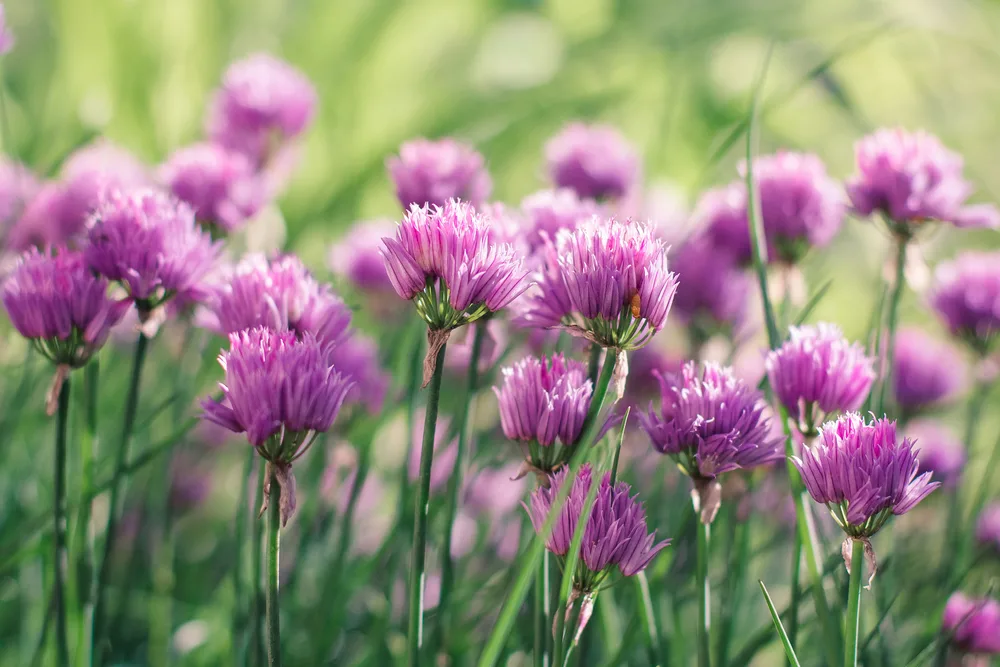
Chives are one of those herbs that is incredibly useful, both in the garden and in the kitchen. If you do not already have some space for them on your property, this article should inspire you to find some.
Whether you have a large garden or just a corner on a sunny windowsill, chives are an excellent thing to grow.
What are Chives?
Chives are a member of the Allium family. This means that they are a close relative of onions, garlic, shallots, leeks, scallions, elephant garlic etc… They are a plant that is widespread across much of Europe, Asia and North America.
Interestingly, chives (Allium schoenoprasum) is the only species in this plant family that is native to both the Old and New Worlds.
These plants are herbaceous perennials which grow into dense clusters around 12-20cm tall.
The bulbs are slender and conical and grow in dense clusters from the roots. Above these, scapes (stems) rise up. These are thin, hollow tubes around 2-3mm across.
Grass-like leaves also form. These are also hollow, though shorter than the scapes.
Flowers form on the scapes between April and June (earlier in the south and later in the north). These flowers are pale purple and star-shaped, with six petals.
They form on an influorescence of around 10-30 such flowers. Seeds are then formed in a small capsule, and mature in summer.
These plants are self-fertile, hermaphroditic, and pollinated by bees, flies, moths and butterflies. They are in leaf from February through to December and are not frost tender.
Chives have been cultivated in Europe since the Mediaeval period, though they have been in use for over 5,000 years.
Why Grow Chives in Your Garden?
There are a wide range of reasons why growing chives in your garden is a great idea. Here are just some of the main reasons you might choose to grow them:
1. For Their Culinary Uses
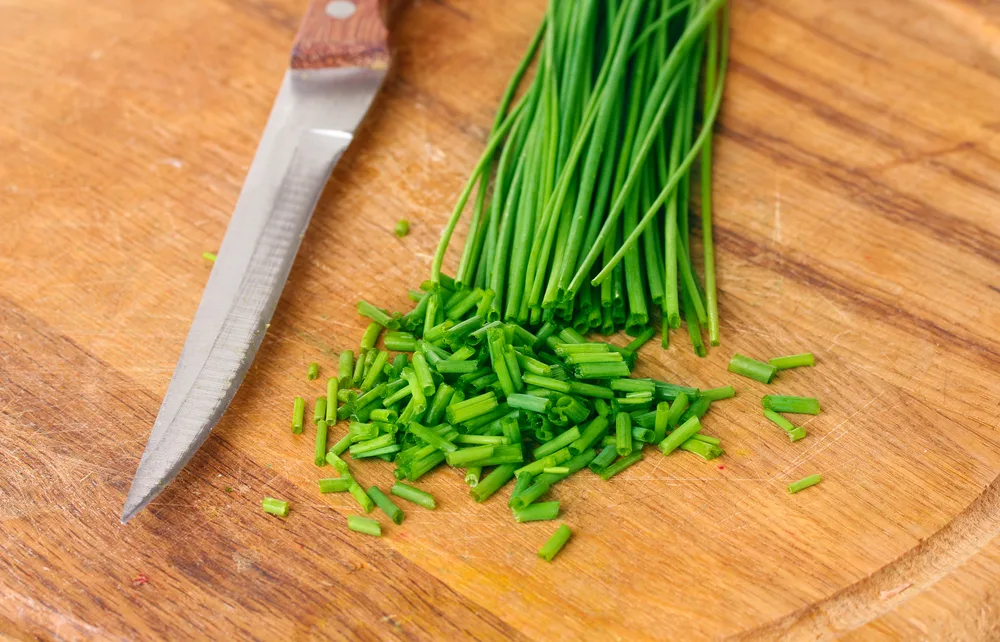
Of course, the main reason to grow chives is to use them as an edible crop. Chives are usually used as a herb, and can be utilised in a wide range of recipes.
The scapes and leaves are useds to add allium flavour, though they are milder than other members of this plant family.
Chives are one of the fines herbes of French cuisine, and are also commonly used in many other cuisines across their native range.
Stems and leaves can be used as edible ties for bundles of herbs of vegetables. The flowers are also edible, and can be used in salads or in several other ways.
We’ll explore some of the ways in which you can use them in more detail later in this article.
2. To Attract Bees and Other Pollinators
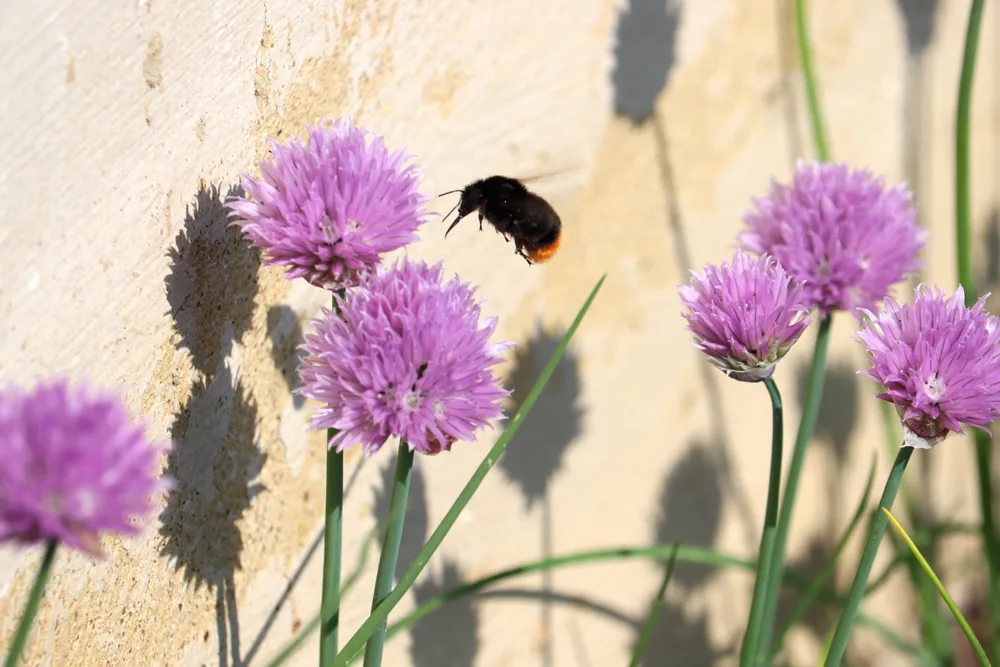
But in addition to being useful as an edible crop, chives are also useful while in growth in your garden. Leave chives to flower, and they are excellent at attracting bees, butterflies and other pollinators to your garden.
Plant chives alongside and between your other crops, therefore, and they can help make sure there are sufficient pollinators around to pollinate all your food crops.
Chives have been listed as amongst the top ten plants for nectar production, which makes them a boon for bees and other precious wildlife.
If you want to help save the bees, planting chives in your garden is a great way to go.
3. To Attract Other Beneficial Insects
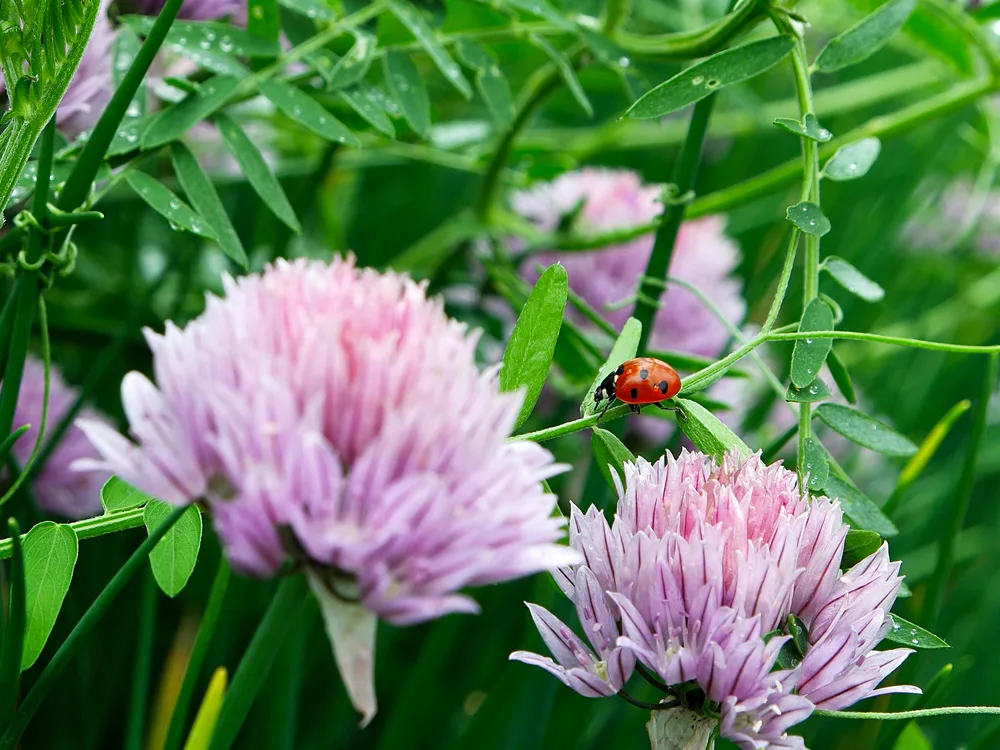
Chives also attract other beneficial insects – insects that prey on pest species and can help to keep your crops safe.
For example, they attract certain beneficial wasps, and ladybugs, that will prey on aphids and scale insects.
4. To Repel Pests
Interestingly, however, the onion-like smell of chives and other Alliums is said to repel many of the insect species that we don’t want around.
Carrot flies, Japanese beetles and aphids are all said to dislike the scent of these plants.
Even if they are not actively repelled, the strong scent can mask the smell of other plants nearby and help to keep them safe from many common pests.
The juice of the plant is also used on the skin as an insect repellent.
If you have a problem with deer in your garden, you may also be interested to know that deer don’t like chives, and will leave them alone. So they are commonly considered to be a ‘deer-resistant’ plant.
5. To Reduce the Incidence of Scab on Apple Trees (And other Diseases)
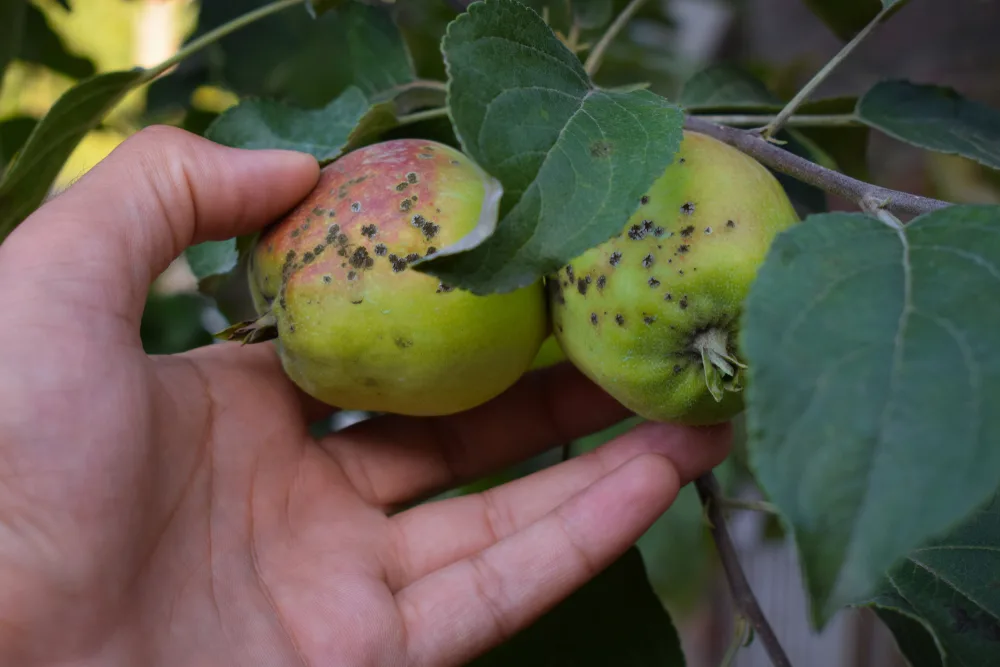
Chives are an excellent plant to include in a fruit tree guild, in the ground layers of a forest garden or in many other polycultures.
Though it can take several years to mature enough to be efficacious in this regard, chives planted close to an apple tree can reduce the incidence of scab.
They can also be useful planted near rose bushes to reduce the incidence of scab and black spot on those plants.
A chive tea made from boiling chopped chives in water can also be sprayed onto cucurbits, gooseberries and other susceptible plants to help control downy and powdery mildew.
This is due to the fact that the plant has been shown to have fungicidal properties.
6. As a Good Ground Cover Plant
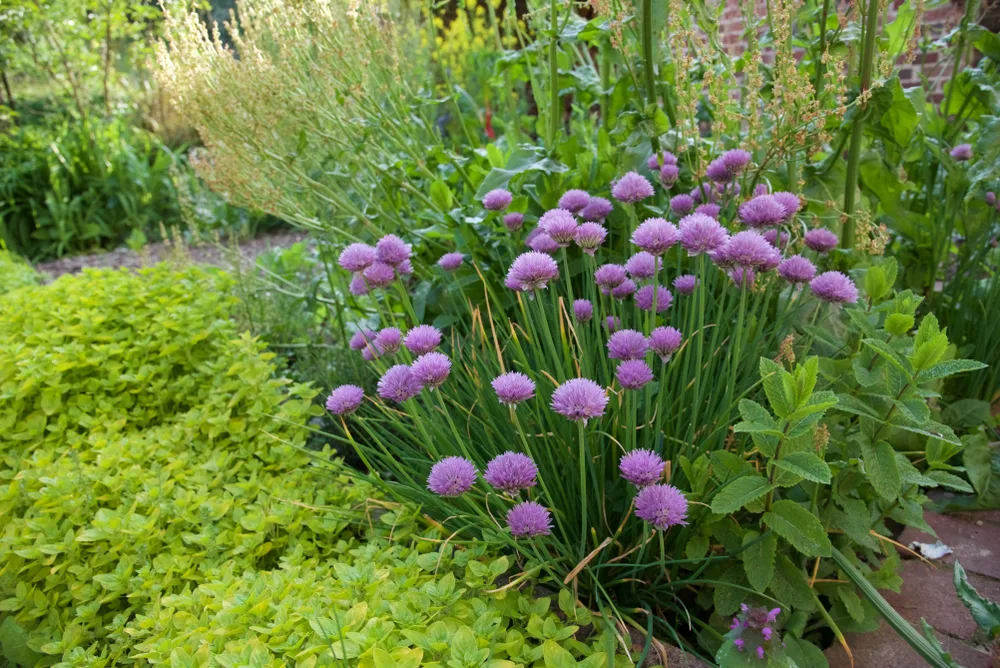
Another reason that chives can be such an excellent companion plant is that their spreading, grass-like form means that they can create good ground cover, and fill in gaps in a planting scheme.
As a ground cover plant, they can help keep weeds down, protect the soil, and reduce moisture loss from the soil in your growing areas.
7. As a Dynamic Accumulator
Chives can also be chopped and dropped to fertilise your growing areas. Chives are a dynamic accumulator.
They are a nutrient accumulator of potassium and calcium – two important nutrients for plants.
By strewing chives leaves and stems around your other crops, they can serve to return these nutrients to the soil ecosystem, where they can be taken up by other plants.
8. As an Ornamental Plant
Chives, especially when in flower, are also a very attractive plant that can find a place in an ornamental garden.
They are decorative as well as functional and can enhance many a garden scheme.
9. To Decorate Your Home
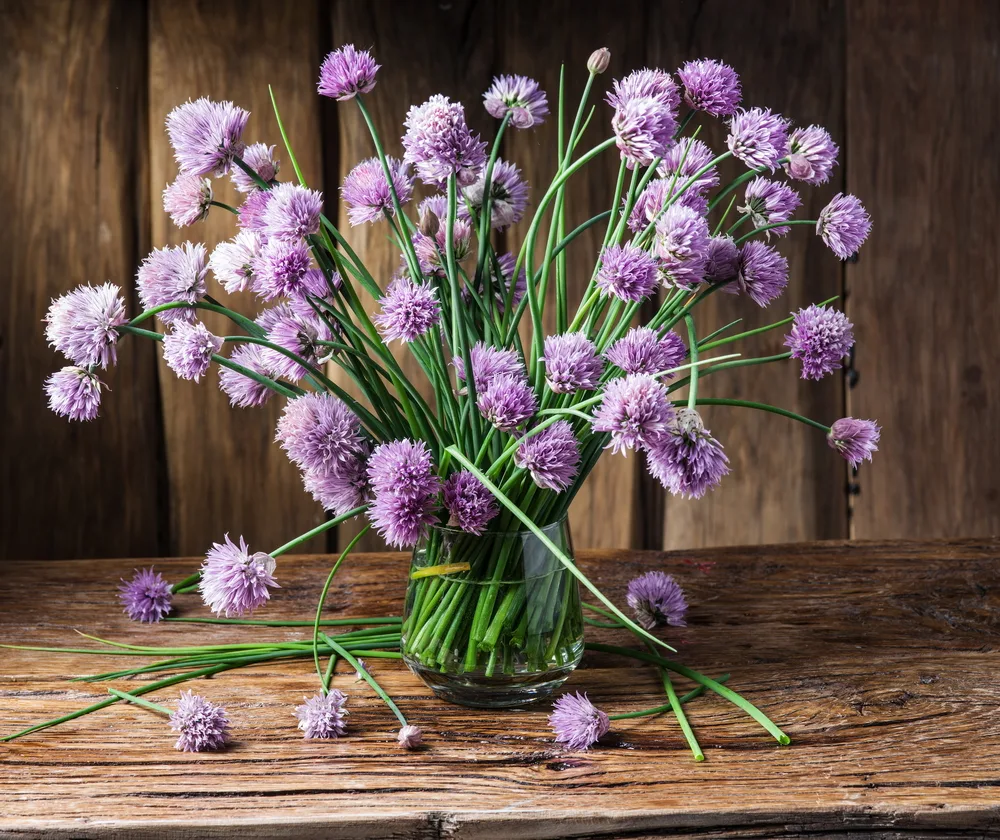
The flowers are not only attractive in the garden. They can also be used fresh or dried for floral arrangements and displays inside your home.
10. For Your Health
Chives also have a range of health benefits. Though not quite as beneficial in natural medicine as garlic, chives do have some medicinal uses.
They are high in minerals and vitamins, especially vitamins A and K. Like other alliums, they can help to regulate cholesterol levels, and lower blood pressure to keep your heart healthy.
They have also traditionally been used to aid the digestive system.
Sowing Chives
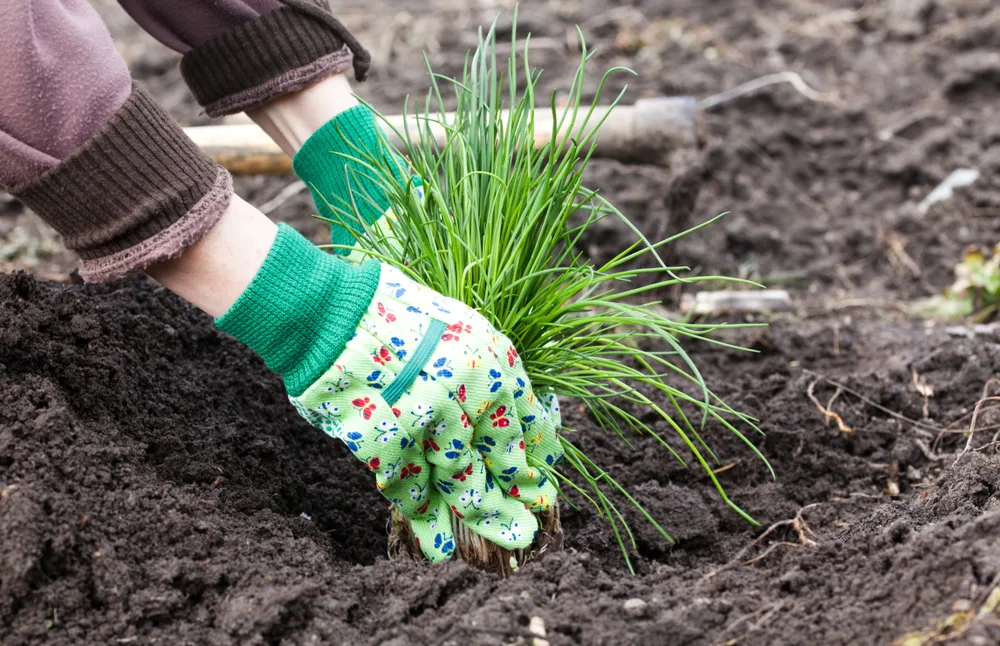
Chives can be grown in a wide range of different settings. For example, they can be placed:
- In a forest garden or fruit tree guild.
- In an ornamental or mixed perennial border polyculture.
- As companion plants in kitchen gardens/ vegetable beds.
- In a dedicated herb garden. (For example, towards the base of the north side of a herb spiral.)
- In containers, inside, in a greenhouse or other undercover growing area, or outside.
Chives will prefer a rich, moist yet well drained soil in full sun or light or dappled shade. They can thrive in most soil types and can even grow in heavy clay.
In terms of pH, they are rather tolerant, and can grow in acid, neutral or alkaline conditions. They can even grow in very alkaline soils.
Chive seeds need temperatures between 60 and 70 degrees F for germination.
They are best sown indoors in early spring in cooler climes, or under a cloche or other form of protection.
Young shoots are ready for planting out in around four-six weeks. Sow seeds thinly across small pots or plugs, cover over lightly and water well.
Growing Chives
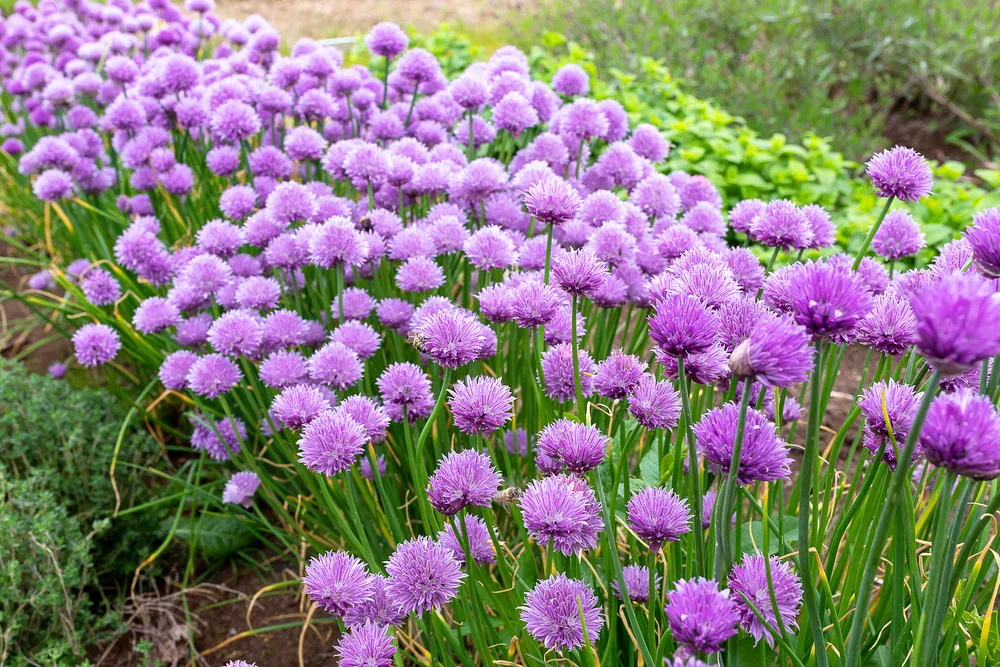
Chives are excellent low-maintenance plants. Just be sure to keep the plants well watered if rainfall is low or the plants are kept undercover.
Remember, if you are growing chives in containers, that these will dry out more quickly. Make sure that you keep the growing medium moist throughout the summer months.
However, overwatering or long wet spells can increase the chances of a disease known as leek rust.
Mild attacks of this fungal disease will cause bright yellow spots on the leaves but will not usually harm the plant. However, serious infections can cause leaves to shrivel and affect yield.
Making sure you do not overwater, covering plants with a cloche or other protection if there is a lot of heavy rain, and avoiding overcrowding can all reduce the chances of infection taking hold.
If you do get an infection, remove all affected plant material as soon as possible, and do not grow alliums in the same spot for at least three years.
Chives can be propagated by division. Simply lift larger, mature, congested clumps from the ground and split them to make new clumps and give the existing clump a new lease on life.
In colder climate zones, chives will usually die back in winter. Vegetative growth will die back, leaving just the bulbs underground.
New growth will spring forth from these bulbs as soon as the weather begins to warm the following year.
Simply leave the debris in place so the nutrients can return to the soil.
Harvesting Chives
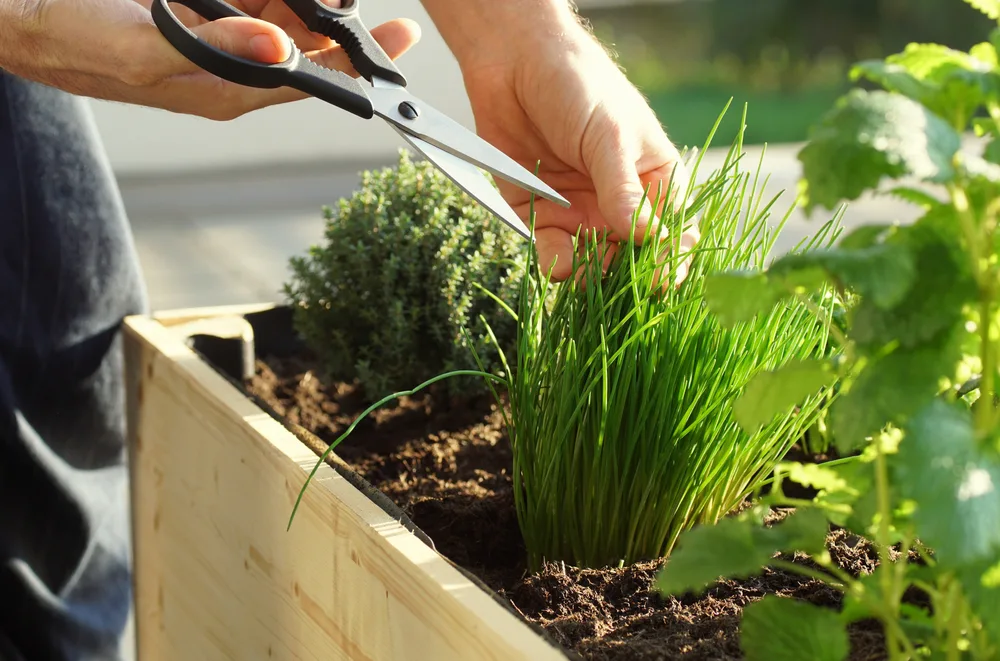
The leaves from chives can be cut with scissors as required throughout the spring and summer months. Cut your plants regularly, since the more often they are cut, the more new growth will be produced.
Keep your plants productive for longer by removing the flowers as soon as they begin to fade.
Remember to leave some flowers for the bees and other wildlife. But remember that you can also use the flowers for edible recipes, or for decoration inside your home.
Preserving Chives
Chives are best used fresh and usually lose their flavour and appeal when dried.
But if you want to retain some for use in winter, you can chop them finely and pack them into ice-cube trays half-filled with water. Pop them in the freezer and you can them simply take out a cube or two whenever you want to use some.
You can also preserve chives by freezing them in butter or oil. You can stir chives into butter to make chive butter, then freeze it and slice off a small portion whenever you need some.
Another option is to freeze chives in an ice cube tray along with olive oil (or any other cooking oil you would usually use) and drop these into a hot pan whenever the fresh chive flavour is required.
One final way to dry your herbs is to blanch and freeze dry them in a vacuum sealed bag. (You can suck the air from a silicone freezer bag using a straw for a DIY vacuum sealing solution.)
Finally, you can also create a chive flower vinegar or chive vinegar by adding flowers or chopped chive leaves to white wine vinegar.
This vinegar can be used to add a light onion flavour to your favourite salads throughout the year.
Using Chives

Chives are delicate and their flavour is shown off to best effect in raw and lightly cooked recipes, or recipes where their mild flavour is preserved.
They work particularly well in salads, with potatoes or with eggs, in vegetable stocks, soups, creamy sauces.
Here are fifteen great chive recipes to try:
Creamy Cucumber and Chive Salad @ paleoleap.com.
Chive Potato Salad @ countryliving.com.
Lemon Chive Sauce @ thespruceeats.com.
Garlic-Chive Fries @ tasteofhome.com.
Gnocchi With Lemon & Chive Pesto @ bbcgoodfood.com.
Chive and Parsley Pesto @ theviewfromgreatisland.com.
Eggs With Chive Flowers @ acouplecooks.com.
Ricotta-Chive Frittata @ marthastewart.com.
Spinach, Goat Cheese & Chive Quiche @ finecooking.com.
Asparagus and Chive Tart @ delish.com.
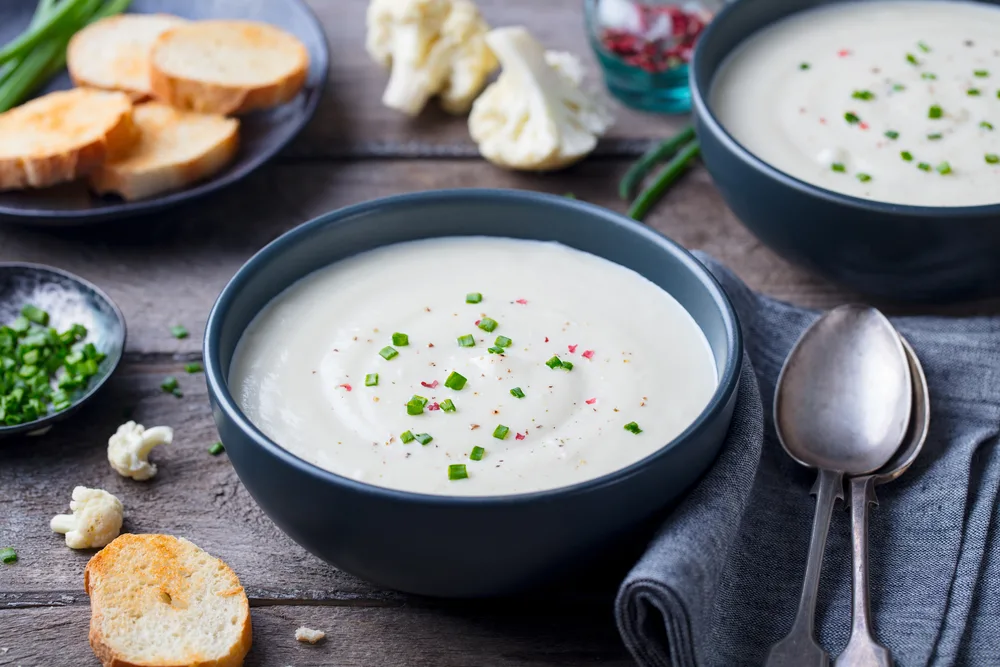
Potato Chive Soup @ onegreenplanet.org.
Vegan Irish Stew With Savory Herb Dumplings @ connoisseurusveg.com
Thai Fried Chive Cakes @ seriouseats.com.
Vegan Cheese Scones With Chives @ thevegspace.com.
Pumpkin Cheese and Chive Muffins @ vegetarianrecipesmag.com.
Of course, there are plenty more recipes out there. These fifteen ideas are just the tip of the iceberg when it comes to using the chives that you grow in your garden.
But whatever you choose to do with them, surely you will now be in no doubt that growing chives in your garden is a great thing to do.

Get the famous Rural Sprout newsletter delivered to your inbox.
Including Sunday musings from our editor, Tracey, as well as “What’s Up Wednesday” our roundup of what’s in season and new article updates and alerts.


